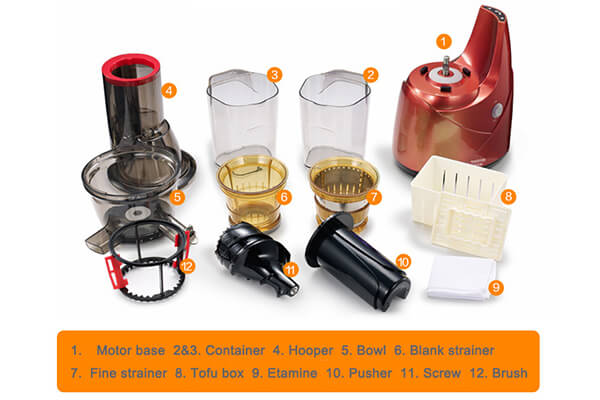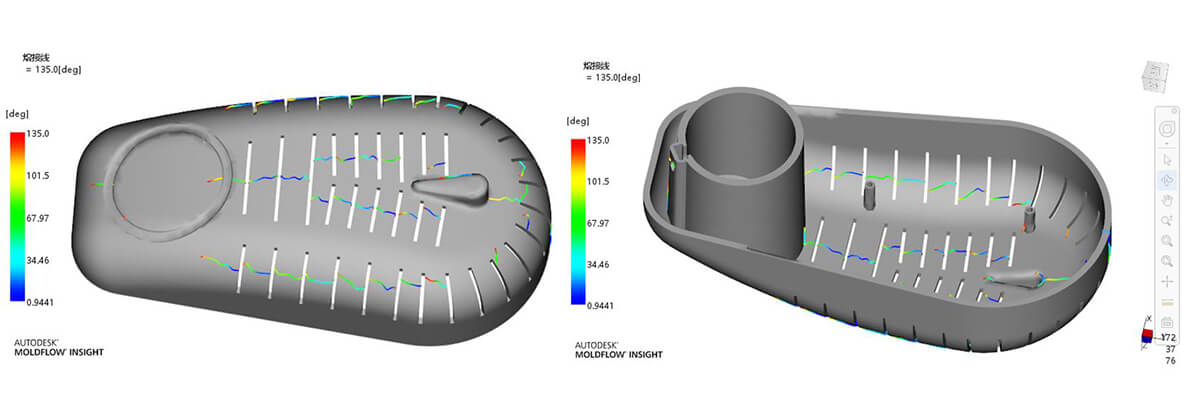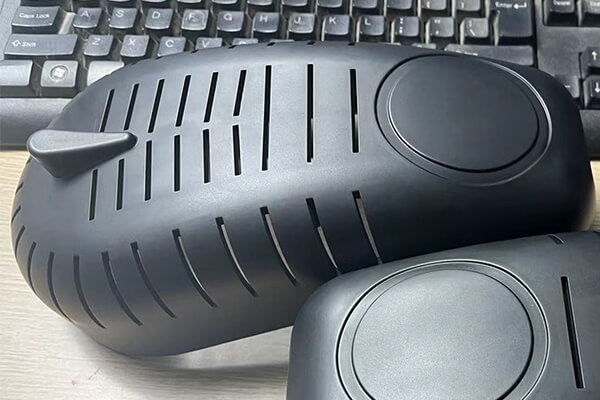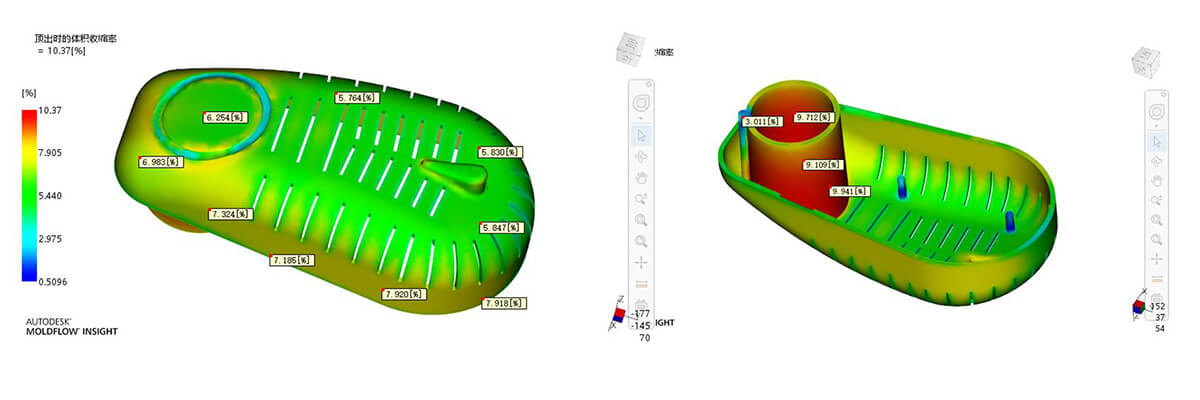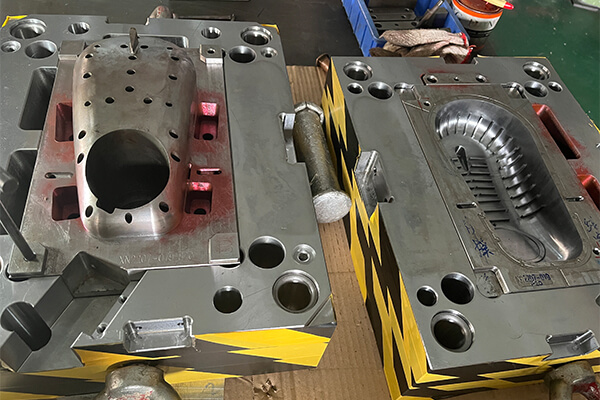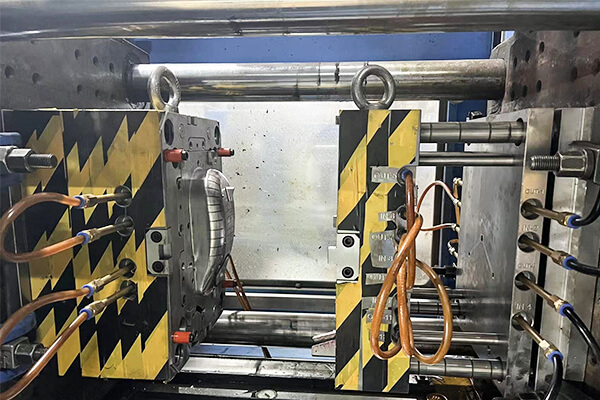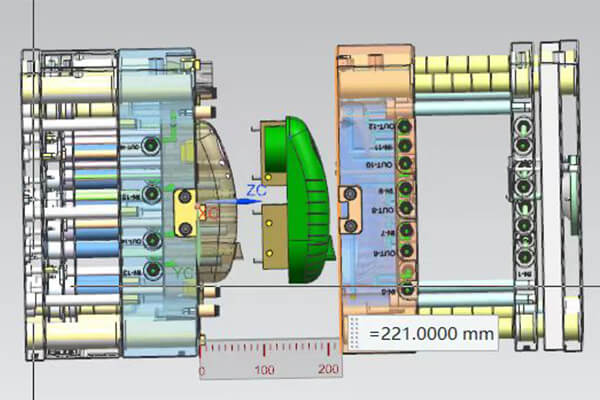Plastic Product Design: How to Create Plastic Parts
This article will detail the process of plastic product design and its impact on injection molding. Our goal is to help you create plastic products that are not only visually appealing, but also high quality and marketable.
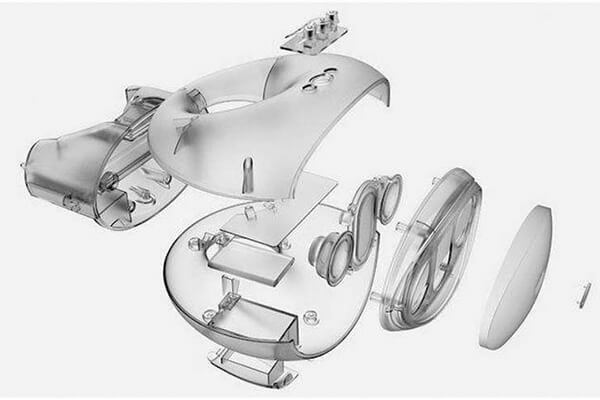
What is Plastic Product Design?
Plastic product design refers to the process of creating and developing new plastic products or improving existing plastic products. From a functional and aesthetic point of view, product design plays a fundamental role in the launch of new products. In order to bring new plastic products to market and ensure their future industrial viability, part design must be considered, including material selection, product characteristics, future development trends, and more.
As an experienced plastic customization company, Sungplastic focuses on plastic product design, analyzes product feasibility, and strives to optimize product design to provide our customers with high-quality plastic parts.
What is Plastic Injection Molding?
Plastic injection moulding is a mass-production method that uses an injection molding machine, melted plastic material, and a precisely engineered tool mould. Plastic injection molding process can be automated for mass production, resulting in cost savings and faster turnaround times. It is a highly versatile and efficient method. Plastic injection moulding offers several advantages, including high production efficiency, repeatability, and the ability to create complex shapes. It is widely used in various industries, such as automotive, electronics, medical devices and consumer goods.

Application of Plastic Injection Molding Process
Plastic injection molding process is widely used in the manufacture of plastic products, and has the advantages of high efficiency, low cost and suitable for mass production. The following are some application fields of injection molding process for plastic products:
- 1. Consumer goods: Injection molding is widely used in the production of various consumer goods. These products often require highly complex shapes and precise dimensions, which can be met by injection molding and mass-produced at relatively low cost. Such as household appliances, electronic products, daily necessities, kitchen utensils, toys, furniture, etc.
Plastic bottles
Kitchen utensils
Plastic containers and storage boxes
Toys and games
Electronic device casings
Personal care products (toothbrushes, combs, etc.)
Read the case study of juicer development. - 2.Automotive Industry: Plastic injection molding is extensively used in the automotive industry for manufacturing various components such as interior trims, dashboards, door panels, bumpers, and engine parts. The process allows for high-volume production of complex shapes and precise detailing, meeting the demanding requirements of the automotive sector.
Car interior components (dashboard, door panels, trim)
Exterior parts (bumpers, grilles, mirror housings)
Engine components (air intake manifolds, radiator tanks)
Lighting fixtures (headlights, taillights) - 3.Medical Devices: Plastic injection molding is widely employed in the medical industry for the production of various medical devices and equipment. This includes syringes, IV components, surgical instruments, diagnostic devices, and housing for medical equipment. The process offers the advantages of producing sterile, precise, and biocompatible parts with high repeatability.
Syringes and needles
IV drip chambers and connectors
Medical tubing
Surgical instruments and handles
Prosthetic and orthotic devices - 4.Packaging Industry: Plastic injection molding plays a crucial role in the packaging industry, where it is used to manufacture containers, caps, closures, and packaging components. The process allows for the production of customized designs, ensuring product protection, ease of use, and branding opportunities.
Plastic bottles and containers
Caps and closures
Blister packs
Flexible packaging (bags, pouches)
Plastic films and wraps - 5.Construction and building materials: The injection molding process is also used in the field of construction and building materials. It is used to make plastic pipes, fittings, insulation, window and door frames, and other plastic building components. The injection molding process can produce weather-resistant and durable plastic products that meet the needs of the construction industry.
PVC pipes and fittings
Window frames and profiles
Insulation materials
Roofing materials (plastic tiles, sheets)
Pipe and cable conduits - 6.Electronics and Electrical: Injection molding is used in a wide range of electronic and electrical applications, including the manufacture of plastic housings, connectors, sockets, wire management accessories, battery housings, electronic modules and assemblies, and more. It offers flexibility, cost-effectiveness and highly complex shapes for the protection, connection and assembly needs of electronic products.
Plastic enclosures for electronic devices
Connectors and terminals
Cable ties and wire management accessories
Battery casings
Printed circuit board (PCB) components (sockets, supports) - 7.Furniture: Injection molding is widely used in furniture manufacturing. It can produce plastic chairs, tables, storage cabinets and furniture accessories that offer durability, diverse design options and cost-effectiveness. The injection molding process can also produce lightweight, easy-to-clean and environmentally friendly furniture products to meet the needs of modern homes.
Plastic chairs and tables
Shelving and storage units
Drawer handles and knobs
Office accessories (desk organizers, file holders)
Upholstery and padding materials
In general, the injection molding process of plastic products is widely used in various fields. It can produce plastic products with complex shapes, high precision and good performance, meeting the needs of different industries for product quality, cost-effectiveness and mass production. Sungplastic has rich experience in injection molding, from small household items to large auto parts, we can meet your needs for customized plastic products.
Plastic Product Design Stages
The plastic product design process involves a series of steps to develop a new plastic product or improve an existing one. Here’s an overview of the typical plastic product design process:
- 1.Idea Generation: The process starts with generating ideas for new plastic products or identifying areas of improvement for existing ones.
- 2.Concept Development: Ideas are further developed into concepts.This involves creating sketches, renderings, or 3D models to visualize the product’s form, features, and overall design. Various iterations and refinements may be done to arrive at an optimal concept.
- 3.Design Specification: In this phase, the concept is translated into detailed design specifications. This includes defining the product’s dimensions, materials, functionality, user interface, and any specific requirements.
- 4.3D Modeling: Computer-aided design (CAD) software is used to create a digital model of the product. The CAD/3D model allows for precise design control, visualization, and virtual testing. It helps identify potential issues, validate the design, and make necessary modifications before moving to the next stage.
- 5.Prototyping: Prototyping involves creating physical models or prototypes of the design to evaluate its form, fit, and function. Rapid prototyping techniques such as 3D printing, CNC machining, or vacuum casting are commonly used.
- 6.Material Selection: Selecting the appropriate plastic material is crucial for the product’s functionality, performance, and manufacturing process.
- 7.Design for Manufacturability: Design for manufacturability (DFM) ensures that the product can be efficiently and cost-effectively manufactured at scale. It involves optimizing the design for the chosen manufacturing processes, such as injection molding, blow molding, or extrusion.
- 8.Final Design Refinement: Based on analysis, testing, and manufacturability considerations, the design is refined to address any identified issues or improvements.
Throughout the plastic product design process, collaboration, iteration, and testing are key. Regular communication between Sungplastic’s designers and engineers and customers is important to ensure a successful outcome.
Factors of Plastic Product Design for Injection Molding
Plastic product design plays a critical role in the success of injection molding, a widely used manufacturing process for the production of plastic parts. Here are some key reasons that emphasize the importance of design for injection molded plastic products:
- 1.Optimal Mold Design:
Effective plastic product design ensures that molds are designed in such a way as to allow for efficient and successful injection molding. The design should consider factors such as part geometry, wall thickness, draft angles, undercuts, and gate placement to facilitate proper material flow, cooling, and ejection during the molding process. - 2.Cost and Time Efficiency:
Well-designed plastic products for injection molding can help minimize material waste, reduce cycle times, and optimize production processes. Know more about injection molding costs. - 3.Part Functionality and Performance:
The plastic product design should focus on achieving the desired functionality and performance of the final part. This includes considering factors such as structural integrity, dimensional accuracy, surface finish, and functional features. - 4.Material Selection and Compatibility:
The plastic product design should take into account the specific requirements of the intended application and select a suitable plastic material accordingly. Different plastics have varying properties such as strength, flexibility, heat resistance, and chemical compatibility. - 5.Aesthetics and Branding:
Plastic product design also encompasses the visual appeal and branding aspects of the product. Attention to aesthetics, ergonomic considerations, and incorporating branding elements can enhance the market appeal and customer satisfaction with the final product.
In summary, effective plastic product design tailored for injection molding is vital for achieving cost-effective, high-quality, and successful manufacturing of plastic parts.
Consideration Factors of Plastic Part Design
Designing plastic parts requires careful consideration of various factors to ensure functionality, manufacturability, and overall success. While each project may have specific requirements, the following factors can serve as a general plastic parts design guide:
- 1.Design for Injection Molding: If you intend to use injection molding for manufacturing, design your part with this process in mind. Consider factors such as draft angles (typically 1-2 degrees per side), uniform wall thickness, appropriate radii at corners, and consistent wall thickness to ensure proper material flow, cooling, and ejection.
- 2.Part Geometry and Complexity: Keep part geometry simple and minimize complexity whenever possible. Complex features, sharp corners, and deep undercuts can increase manufacturing challenges and costs.
- 3.Wall Thickness: Maintain consistent wall thickness throughout the part as much as possible. Uniform wall thickness promotes better material flow during injection molding and helps prevent issues like sink marks, warping, and uneven cooling.
- 4.Ribs and Bosses: Use ribs and bosses to add strength and rigidity to the part. Ribs are thin, vertical walls that reinforce the structure, while bosses are raised features used for attaching screws or fasteners.
- 5.Fillets and Radii: Add fillets or radii to sharp corners to distribute stress and avoid stress concentration points. Rounded edges also enhance the overall aesthetics of the part. Recommended fillet size is typically 0.5 times the wall thickness or larger, depending on the material and design requirements.
- 6.Undercuts and Side Actions: Minimize undercuts or complex side actions if possible, as they can complicate the mold design and increase production costs. If undercuts are necessary, consider using mechanical or hydraulic side actions to accommodate the mold design.
- 7.Parting Lines and Ejection: The location of parting lines, where the mold splits into two halves, should be considered in the design. Parting lines can affect the appearance and functionality of the part. Additionally, proper ejection features should be incorporated to ensure easy and consistent removal of the part from the mold.
- 8.Material Selection: Choose the appropriate plastic material based on the part’s requirements. Consider factors such as mechanical properties, chemical resistance, temperature stability, and cost.
- 9.Prototyping and Testing: Before proceeding with large-scale production, create prototypes to validate the design, fit, and functionality of the part. Prototyping helps identify any design flaws or improvements needed early on, reducing cost and time associated with modifications during mass production.
It’s important to note that these guidelines provide a general framework for plastic part design. These factors are interconnected, and optimizing one factor may impact others. Therefore, a holistic approach to plastic part design for injection molding, considering all these factors simultaneously, is crucial to achieve a successful and cost-effective manufacturing process. Partnering with Sungplastic can further optimize your plastic part design for successful production.
The Future of Plastic Product Design
The future of plastic product design is expected to be shaped by several trends and developments. Here are five key aspects that could influence the future of plastic product design:
- 1.Sustainable Materials: With growing environmental concerns, there is a shift towards using sustainable materials in product design. Designers will need to consider the properties and limitations of the materials to create environmentally friendly products.
- 2.Circular Economy and Recycling: The concept of a circular economy is gaining traction, aiming to minimize waste and maximize resource efficiency. Designers will play a critical role in creating products that are easily recyclable, using mono-materials or designing for easy disassembly.
- 3.Advanced Manufacturing Technologies: Rapid advancements in manufacturing technologies, such as additive manufacturing (3D printing) and advanced injection molding techniques, will impact plastic product design. These technologies offer greater design freedom, customization options, and the ability to create complex geometries.
- 4.Internet of Things (IoT) Integration: The integration of IoT technology into products is on the rise. Plastic product designers will need to consider how to incorporate sensors, connectivity, and smart features into their designs. This includes ensuring seamless integration of electronics, power management, and user interfaces, while maintaining aesthetic appeal and functionality.
- 5.User-Centric Design and Personalization: As consumer expectations continue to evolve, there is an increasing demand for personalized and user-centric products. Designers will need to focus on creating products that cater to individual preferences, lifestyles, and needs.
Advances in materials science such as self-healing materials and shape memory polymers may provide new opportunities for innovative product design. Augmented reality (AR) and virtual reality (VR) technologies can also play a role in the design process, allowing designers to visualize and iterate designs in a more immersive and interactive way. Designers need to adapt their approaches to create products that meet the changing needs of consumers and the demands of a more sustainable and connected world.
Experts in Plastic Product Design to Production-Sungplastic
Injection molding is one of the best methods for mass producing plastic parts and products. Sungplastic, as an experienced and reputable injection molding manufacturer, has been helping customers bring products to market through high-quality and cost-effective injection molding designs for many years. Whether designing from scratch for injection molding or refining a design with a customer, our manufacturing team works closely with the customer to ensure that the product is a perfect realization of the customer’s vision. In terms of custom plastic parts, we have the following characteristics:
- 20 years of flawless plastic design and manufacturing experience
- Unrivaled expertise in plastic materials and processing
- Validate all our designs before investing in tooling
- Flexible On-Demand Manufacturing Services
- Stable and efficient batch injection molding production
If you want to customize your next project using injection molding technology, looking for world-class design, look no further than Sungplastic. We design plastic products that combine aesthetics and function to create products with outstanding market appeal and sustainability. Our experts and technologies can help you complete the whole process from product design to finished products, helping your products achieve the best results.
Contact Sungplastic today if your product requires high quality injection molding design. We can help you realize your project and ensure that the product reaches the market on time all over the world.
About Sungplastic
Sungplastic is a plastic product manufacturer with rich experience in injection molding. According to the different product development requirements, we flexibly adjust the manufacturing process to achieve high quality, high efficiency and more economical.
We offer a variety of manufacturing services: Rapid Prototyping, Tool Making, Injection Molding, Product Design and Development, CNC Machining and Metal Stamping. You can choose from a variety of plastics, silicone rubber, or metal for your product. Regardless of mass production or small batch customization, Sungplastic has always been committed to providing assured, efficient and more economical one-stop processing services for your projects.
Contact us for a free quote and project review.
Get a free quote and design analysis today.
We’ll reply you within 6 working hours. We respect your privacy.

